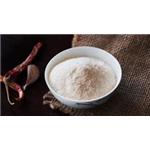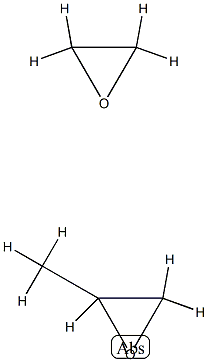Polyethylene-polypropylene glycol: Innovating Chemistry for Diverse Applications
Oct 29,2024
Introduction
Polyethylene-polypropylene glycol, known as Poloxamer 188, is a polydisperse mixture of triblock copolymers. Each molecule has a center hydrophobic poly(propylene oxide) (PPO) block, flanked by 2 hydrophilic poly(ethylene oxide) (PEO) blocks. It has been used traditionally in the pharmaceutical industry as a defoaming agent, detergent, dispersing agent, emulsifying agent, solubilizing agent, and drug delivery vehicles. Although less common, it has also found application as a stabilizing surfactant in biological parenteral products.

Used as surfactant
Even though polysorbate 80 and 20 are the most commonly used surfactants in biological products, alternative choices have been explored by researchers in the pharmaceutical field, including poloxamer 188 (P188), brij, and maltoside, among others. Among these, P188 is the only surfactant that has been used in commercial biological drug products, including Gazyva®, Orencia®, Norditropin®, and Hemlibra®. The chemical stability of P188 in solution is essential to its application in biological formulations. In the solid state, poloxamers P188 and P407 have been reported to degrade through auto-oxidation and chain cleavage at elevated temperatures, producing aldehydes, organic acids, and smaller molecular weight polymers. Another study demonstrated that P188 powder began degrading at 40°C. Formation of organic acids (such as formic and acetic acids), pH shifts, aldehyde formation, and changes in molar mass may be monitored as the indicators of P188 chemical stability.
Advantage
P188 is the most prevalent surfactant used in mammalian and insect cell cultivation due to its shear protection against sparging damage and its approval by the Food and Drug Administration (FDA) as a constituent of injectable products. Poloxamer 188 has been shown to decrease surface tension and, as a result, reduce the energy expelled due to bubbles bursting within the bioreactors along with its properties to reduce the affinity of bubbles and cell attachment.
Poloxamer 188 has an average molecular weight of 8400 Da, of which ethylene oxide makes up 80%. Poloxamer 188 is typically added to cell culture media at a concentration of 1–2 g/L, but this amount can vary depending on the cell line, media composition, and manufacturing process. Renal toxicity in early clinical trials with P188 was greatly reduced when low MW constituents (e.g., glycols) were removed from the commercial grade. P188 has low hemolytic potential and did not alter the viability or barrier integrity of Caco-2 monolayers up to a concentration of 50 mg/mL. While membrane perturbation is common for many small molecule surfactants, P188 has been assessed for its capacity to repair mammalian membranes. Protective effects have also been seen with other poloxamers. For example, P407 attenuated the hemolytic action of the amphiphilic drug miltefosine. P188 is also used as a stool softener. In one example, an oral suspension contains 1 g per 5 mL, a high dose that suggests it is not a potent mucosal perturbant.
References:
[1] TINGTING WANG. Solution Stability of Poloxamer 188 Under Stress Conditions[J]. Journal of pharmaceutical sciences, 2019, 108 3: A1-A10. DOI:10.1016/j.xphs.2018.10.057.
[2] CIARAN BUCKLEY C M, JONATHAN BONES*. Quantitative Analysis of Poloxamer 188 in Biotherapeutic Process Streams Using Liquid Chromatography–Triple-Quadrupole Mass Spectrometry[J]. ACS Omega, 2024, 9 13: 14648-15726. DOI:10.1021/acsomega.3c08197.
- Related articles
- Related Qustion
- Pharmacology of Polyethylene-polypropylene glycolSimeprevir Mar 15, 2022
Polyethylene-polypropylene glycol is used as a food additive. It belongs to the family of Epoxides. These are compounds containing a cyclic ether with three ring atoms
- Applications of Polyethylene-polypropylene glycol Sep 7, 2021
Poloxamer (oloame) is a polyoxyethylene polyoxypropylene ether block copolymer, the trade name is luromio. This is a new type of polymer nonionic surfactant. White or light yellow translucent solid; slightly smelly.
Supplementation with pyridoxal 5'-phosphate monohydrate can synthesize neurotransmitters such as dopamine and serotonin, maintaining a healthy nervous system.....
Nov 4,2025Biochemical EngineeringWhile both Span 80 and Tween 80 have emulsifying properties, their chemical structures, solubility characteristics, and applications differ.....
Jul 12,2024Organic reagentsPolyethylene-polypropylene glycol
9003-11-6You may like
Polyethylene-polypropylene glycol manufacturers
- Polyethylene-polypropylene glycol
-

- $5.00/ KG
- 2025-12-16
- CAS:9003-11-6
- Min. Order: 1KG
- Purity: 99% hplc
- Supply Ability: 500TONS
- Polyethylene-polypropylene glycol
-

- $100.00/ kg
- 2025-12-16
- CAS:9003-11-6
- Min. Order: 1kg
- Purity: 99%
- Supply Ability: 5000
- Poloxamer 188
-

- $80.00 / 1kg
- 2025-12-16
- CAS:9003-11-6
- Min. Order: 1kg
- Purity: 82.3%
- Supply Ability: 1000






